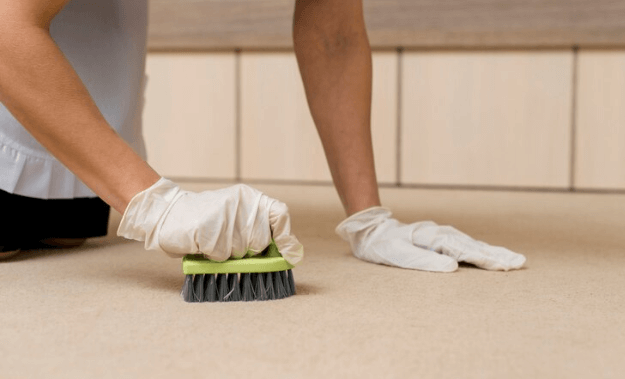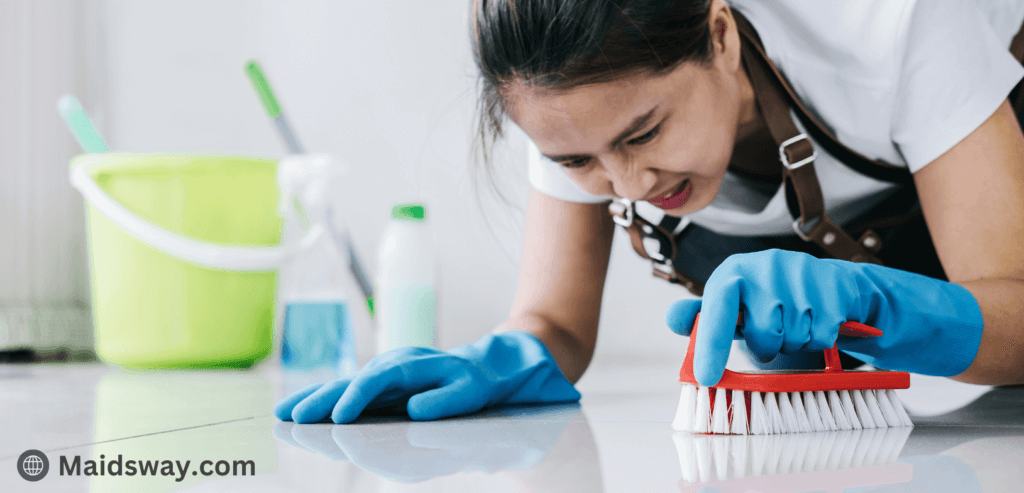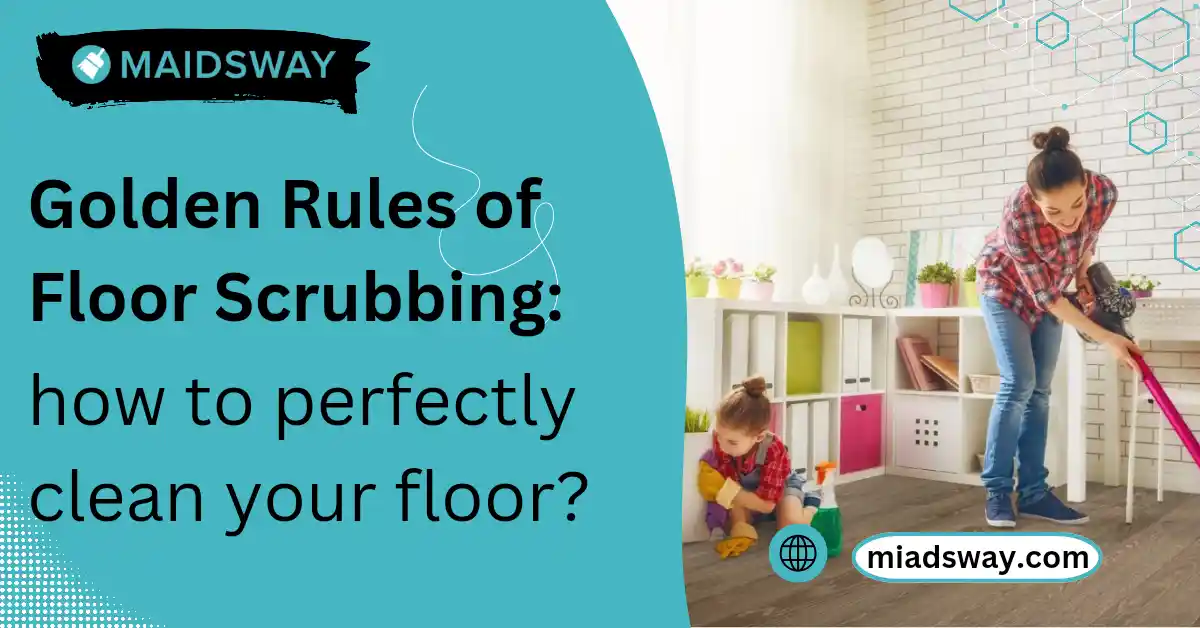Keeping your floors spotless is essential for maintaining a clean and healthy home. However, achieving a clean floor requires more than just a quick sweep or mop. When done correctly, the art of floor scrubbing can make a significant difference in your home’s overall cleanliness. In this guide, we’ll explore the golden rules of floor scrubbing, covering everything from how to scrub floors by hand to the tools you’ll need, like a scrubbing floor brush. Let’s dive into the steps for achieving a flawless floor scrub.
Golden Rules of Floor Scrubbing

1- Choose the Right Tools for Floor Scrubbing
The first rule of effective floor washing is to use the correct instruments. A good floor scrub brush is vital for removing stubborn filth and grime. A brush with strong bristles will dislodge trash from crevices and rough surfaces on most floors. If you’re washing fragile flooring like wood or laminate, use a softer scrubbing brush to prevent scratches.
Use a scrubbing floor brush with a comfortable handle to apply the appropriate pressure without hurting your back for manual cleaning. A floor scrubber machine is an alternative suitable for larger areas or when you want to reduce the effort required to clean floors.

2- Prep the Floor Before Scrubbing
Before you begin cleaning the floor, you must first prepare the surface. Sweeping or vacuuming will help to remove loose dirt, dust, and debris. This procedure prevents dirt from being pushed around during the floor scrub, making your scrubbing efforts more effective.
Next, evaluate the type of flooring you’re working with. Cleaning solutions vary depending on the type of floor material. Make sure to choose a cleaning solution suited for your particular flooring type. Avoid harsh chemicals on fragile surfaces, and always conduct a patch test in an inconspicuous area before using a new cleaner.
3- How to Scrub Floors by Hand?
- If you’re scrubbing floors by hand, apply your preferred cleaning solution to a small portion.
- Allow the solution to settle for a few minutes to help break down the dirt and grime.
- Then, using your scrubbing brush, circularly scrub the floor, moving from one end of the room to another.
- When you scrub the floors, concentrate on areas with tenacious stains or high traffic.
- Applying more pressure in these areas will assist in lifting dirt more effectively.
- Rinse your brush periodically to avoid spreading dirt while you scour the floor.
- After scrubbing, use a mop or clean cloth to remove the loose dirt and cleaning solution.
- Finally, rinse the floor with clean water

4- How to Scrub a Floor with a Floor Scrubber?
The process will be considerably faster and simpler if you have access to a floor scrubber machine. Begin by filling the machine with the appropriate cleaning solution per the manufacturer’s recommendations. To ensure even coverage, make overlapping passes with the floor scrubber.
Floor scrubbers are especially useful in large spaces or commercial situations where manual scrubbing is time-consuming. However, they can be utilized in domestic houses to clean your flooring’s grooves and textures thoroughly.
5- Post Scrubbing Care
Once you’ve finished scrubbing the floor, it’s crucial to rinse away any remaining cleaning solution. Residual soap or cleaners can leave streaks and make the floor slippery. Use a clean mop or towels to rinse and dry the floor thoroughly. For best results, dry the floor as you go to prevent water spots and ensure a polished look.
In high-humidity areas or during cold weather, consider using fans or opening windows to speed up the drying process. A completely dry floor is less likely to attract new dirt, keeping your floors cleaner for longer.
6- Regular Maintenance
Regular maintenance is key to keeping your floors clean between deep scrubs. Sweep or vacuum daily to remove dirt and debris that can scratch the surface. A quick wipe with a damp mop can also help maintain the cleanliness achieved through floor scrubbing.
Consider placing rugs or mats in areas with heavy foot traffic to minimize dirt buildup. Regular spot cleaning of spills and stains will also reduce the need for frequent deep scrubbing.
Tips For How to Perfectly Clean Your Floors
- Always start with the mildest cleaning product before moving on to stronger products or stronger concentrations of cleaning solution.
- Some cleaning products are designed to be used at full strength, while others are meant to be diluted. Always read and follow label directions.
- Use only the recommended amount. More will not guarantee a cleaner surface; it will only leave behind residue that can attract dirt and grime.
- Most detergents work best in warm to hot water but read the label instructions.
- Use a scrub brush or a nylon scrub pad to agitate the cleaning solution on the surface you’re tending to. If the brush drags, add more solution.
- Agitate in circular motions using light pressure. If you find yourself pressing hard as you clean, you probably need a brush with stiffer bristles or a more abrasive pad.
- After scrubbing, let the cleaning solution sit for a few minutes to emulsify or dissolve stubborn dirt.
- Rinse the surface well with a clean, damp cloth and dry it with another.
After each use, rinse brushes thoroughly to remove food or dirt particles. Do not soak brushes to clean them; doing so can weaken or dislodge bristles. Allow brushes to air dry before storing them to prevent them from becoming moldy or sour. Dry them bristle side up or hanging from a hook to prevent the bristles from warping. Your Basic Principles of Scrubbery are done.
Conclusion
Scrubbing the floors is vital for achieving a properly clean and polished home. Following these golden rules of floor scrubbing and using the proper instruments, such as a scrubbing floor brush, will allow you to scrub floors and keep them clean efficiently. Whether you scrub the floor by hand or machine, consistency and attention to detail are key. With the right approach, your floors will shine like new, improving the overall look of your home.

